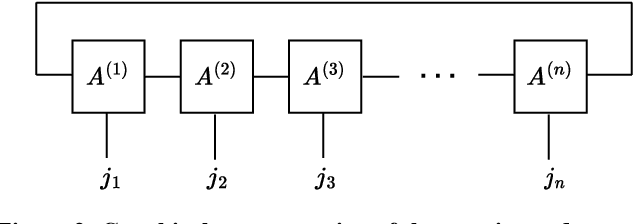Richik Sengupta
Tensor networks in machine learning
Jul 06, 2022

Abstract:A tensor network is a type of decomposition used to express and approximate large arrays of data. A given data-set, quantum state or higher dimensional multi-linear map is factored and approximated by a composition of smaller multi-linear maps. This is reminiscent to how a Boolean function might be decomposed into a gate array: this represents a special case of tensor decomposition, in which the tensor entries are replaced by 0, 1 and the factorisation becomes exact. The collection of associated techniques are called, tensor network methods: the subject developed independently in several distinct fields of study, which have more recently become interrelated through the language of tensor networks. The tantamount questions in the field relate to expressability of tensor networks and the reduction of computational overheads. A merger of tensor networks with machine learning is natural. On the one hand, machine learning can aid in determining a factorization of a tensor network approximating a data set. On the other hand, a given tensor network structure can be viewed as a machine learning model. Herein the tensor network parameters are adjusted to learn or classify a data-set. In this survey we recover the basics of tensor networks and explain the ongoing effort to develop the theory of tensor networks in machine learning.
 Add to Chrome
Add to Chrome Add to Firefox
Add to Firefox Add to Edge
Add to Edge